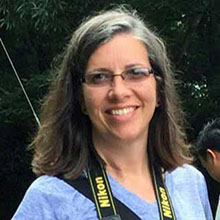Biography
Dr. Ruth H. Carmichael is a Senior Marine Scientist at the Dauphin Island Sea Lab and a Professor of Marine Sciences at the University of South Alabama.
She came to Alabama from Maine, where she was an Assistant Professor of Marine Science at the University of Maine-Machias. Carmichael holds an MA (1998) and PhD (2004) from Boston University at the Marine Biological Laboratory in Woods Hole, MA.
She is a population and trophic ecologist who uses traditional ecological techniques coupled with elemental and telemetry methods to understand how organisms respond to environmental perturbations, from physiological responses to changes in growth and survival or movement patterns.
She is Director of DISL’s Manatee Sighting Network and operates the Alabama Marine Mammal Stranding Network. She is Co-chair of the Mobile Bay National Estuary Program’s Science Advisory Committee and Member-At-Large for the Coastal and Estuarine Research Federation.
She has served as an editor for four scientific journals and is a past President of the Gulf Estuarine Research Society. She has more than 50 publications in Marine Ecology and is an editor of the recent book, Changing Global Perspectives on Biology, Conservation, and Management of Horseshoe Crabs, Springer, New York.
Education
- 2004 Ph.D. Marine Biology, B.U. Marine Program, Marine Biological Laboratory
- 1998 M.A. Marine Biology, B.U. Marine Program, Marine Biological Laboratory
- 1993 B.A. Biology with honors, University of Chicago
Courses
- Marine Conservation Biology
- Invertebrate Zoology
- Scientific Communication
- Stable Isotope Ecology Seminar
- Biology and Conservation of Horseshoe Crabs
In the News
Research
My research focuses on marine ecosystem responses; understanding relationships between organisms and their environment and specific biological and physiological responses to environmental change.
In particular, I am interested in the mechanisms by which anthropogenic-driven perturbations affect coastal habitats and species. I give special focus to commercially important coastal bivalves, horseshoe crabs, manatees and dolphins. I use a variety of approaches to make these assessments.
I measure how perturbations affect habitat and food quality for consumers, and then determine the extent to which these effects may be transferred up coastal food webs in terms of change in growth, survival, and physiology. I also employ natural abundance stable isotopes to trace N and C sources from consumers to their food sources and ultimately to N and C sources from land.
I use this information to discern trophic interactions, define linkages between anthropogenic factors and organism responses, assess nutritional importance of food sources, discern physiological state of organisms, and historically trace responses to environmental change.
Current Research Grants:
- Alabama Department of Conservation and Natural Resources – Bottlenose dolphin abundance and condition in nearshore and coastal ecosystems. 2019- 2028
- Alabama Department of Conservation and Natural Resources – Collection of fish species in the Mobile Bay/Mississippi Sound system. 2019-2024
- Gulf of Mexico Energy Security Act/U.S. Fish and Wildlife Service – Capture, tagging, and tracking of West Indian manatees in Alabama and nearby waters. 2024-2027
- U.S. Food & Drug Administration/U.S. Environmental Protection Agency - Water quality and seafood safety indicators in coastal Alabama waters. 2021-2026
Past Research Grants:
- National Fish and Wildlife Foundation (NFWF) - Alabama Marine Mammal Conservation and Recovery Program. 2015-2020
- Alabama Division of Wildlife and Freshwater Fisheries - Aerial mapping of manatee thermal refugia in Alabama waters: Defining essential habitat. 2015-2017
- U.S. Fish and Wildlife Service - Decadal scale documentation of endangered West Indian manatee habitat use in the northern Gulf of Mexico west of Florida. 2016-2018
- WHOI Sea Grant Program - A history of mercury impacts to Waquoit Bay, MA clams. 2014-2017
- MS-AL Sea Grant Consortium - A circulation and transport model for fishery management in Mobile Bay and eastern Mississippi Sound. 2014-2017
- US Army Corps of Engineers (USACE) - Determining sources, history and status of eutrophication at Naval Station Guantanamo Bay, Cuba. 2014-2015
- MS Water Resources Research Institute (MWRRI) - Water quality in Bangs Lake: Effects of recurrent phosphate spills to a coastal estuary: Years 1 and 2. 2014-2015
- Alabama Division of Wildlife and Freshwater Fisheries - Population ecology, movements, habitat use and diet of West Indian Manatees in Alabama waters. Various projects 2009-2015
- National Fish and Wildlife Foundation (NFWF) - Support for the Alabama Marine Mammal Stranding Network. 2014
- NOAA, National Coastal Data Development Center (NCDDC) - Data Management in Support of NOAA’s Integrated Ecosystem Assessment for the Gulf of Mexico: Dauphin Island Sea Lab’s Data Management Center. Various projects 2007-2013
- NOAA, Prescott Fund, Fisheries Protected Resources Program - Establishing a regionally cooperative dolphin stranding network for Alabama. 2011-2012
- National Fish and Wildlife Foundation (NFWF) - A cooperative marine mammal stranding network for Alabama. 2011-2012
- BP-GoMRI - Gulf of Mexico Ecosystem Recovery: Sentinel macrofauna (MESC). 2011-2012 Effects of oil contaminants on sentinel benthic and pelagic species in Mobile Bay, AL (NGI). 2010-2011
- NOAA, National Estuarine Research Reserve (NERR) System - National Science Collaborative, Legacy effects of land-use change and nitrogen source shifts on a benchmark system: Building capacity for collaborative research leadership at the Grand Bay Reserve. 2010-2013
- NOAA, Natural Resource Damage Assessment (NRDA) Program - Proposed data collection plan to assess injury to West Indian manatees from the Deepwater Horizon Oil Spill outside of Florida. 2010
- Alabama Oyster Reef Restoration Program - Quantification of direct and indirect nitrogen removal by oysters (Crassostrea virginica). 2009-2011
- Richard C. Shelby Center for Ecosystem-based Fisheries Management - From Mobile Bay to nGOM fisheries: The trophic importance of land-derived organic matter. 2009-2011
- MS-AL Sea Grant Consortium - Use of stable isotope ratios to link wastewater sources to effects on shellfish and human health: Defining relevant and effective spatial and temporal scales for management. 2008-2010
Carmichael Lab
Prospective students
Students are accepted through the University of South Alabama. All students must meet the requirements for admission to the University of South Alabama graduate school and Marine Sciences Department. Qualified applicants may send GRE scores, GPA, current CV, and a brief statement, indicating specific topics of interest, to rcarmichael@disl.org.
Current Personnel
Mackenzie Russell
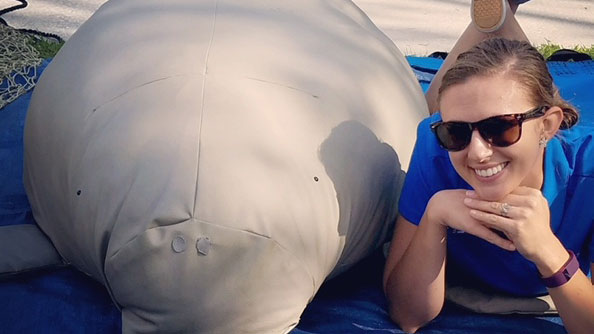
M.S. University of North Carolina-Wilmington
Alabama Marine Mammal Stranding Network Stranding Coordinator
Dr. Thibaut Bouveroux
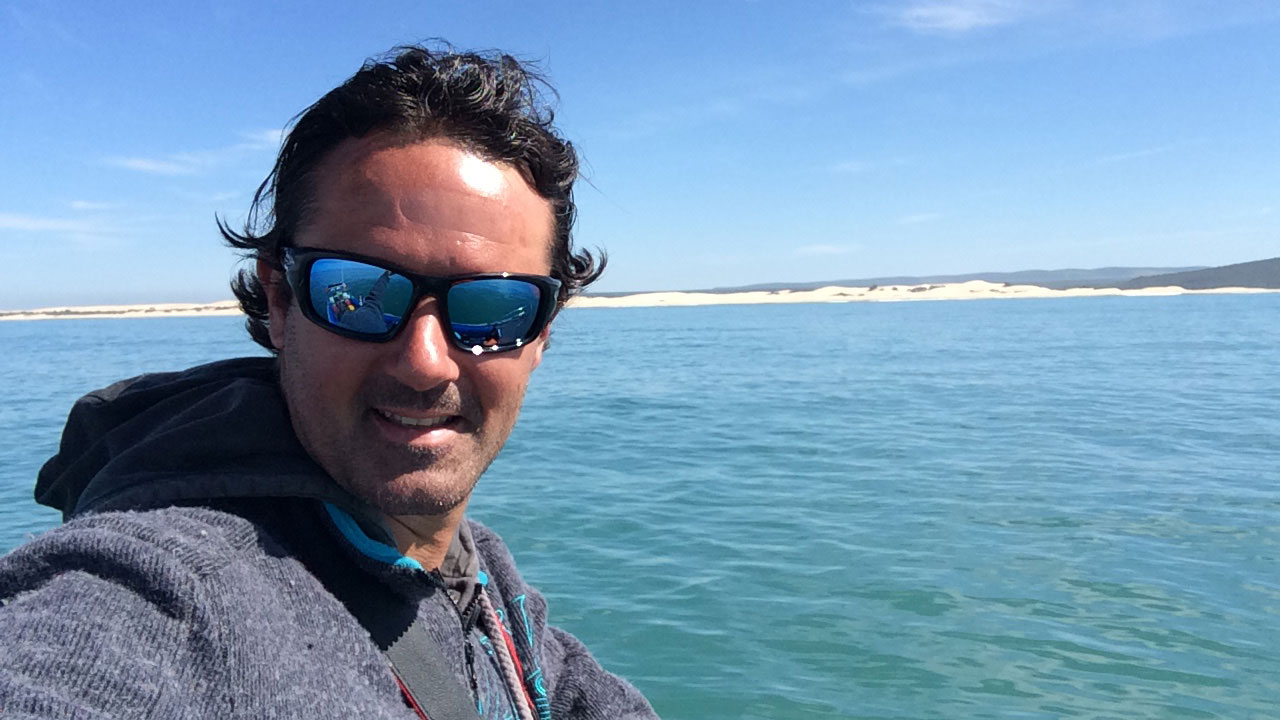
Ph.D. Catholic University of Louvain, Belgium (UCLouvain)
“Abundance and habitat selection of bottlenose dolphins in Alabama waters”
Dr. Catharina Vendl
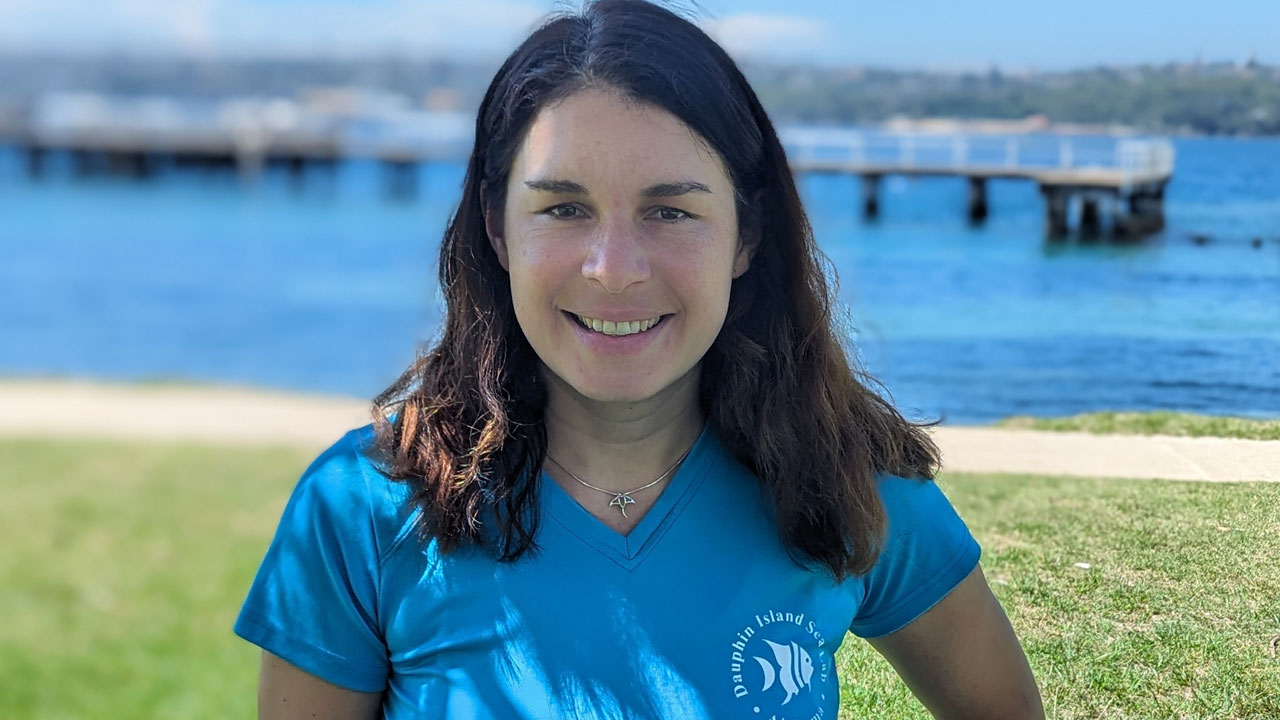
Ph.D. University of New South Wales, Sydney, Australia
Marine Mammal Research Program Veterinarian
Matt Hodanbosi
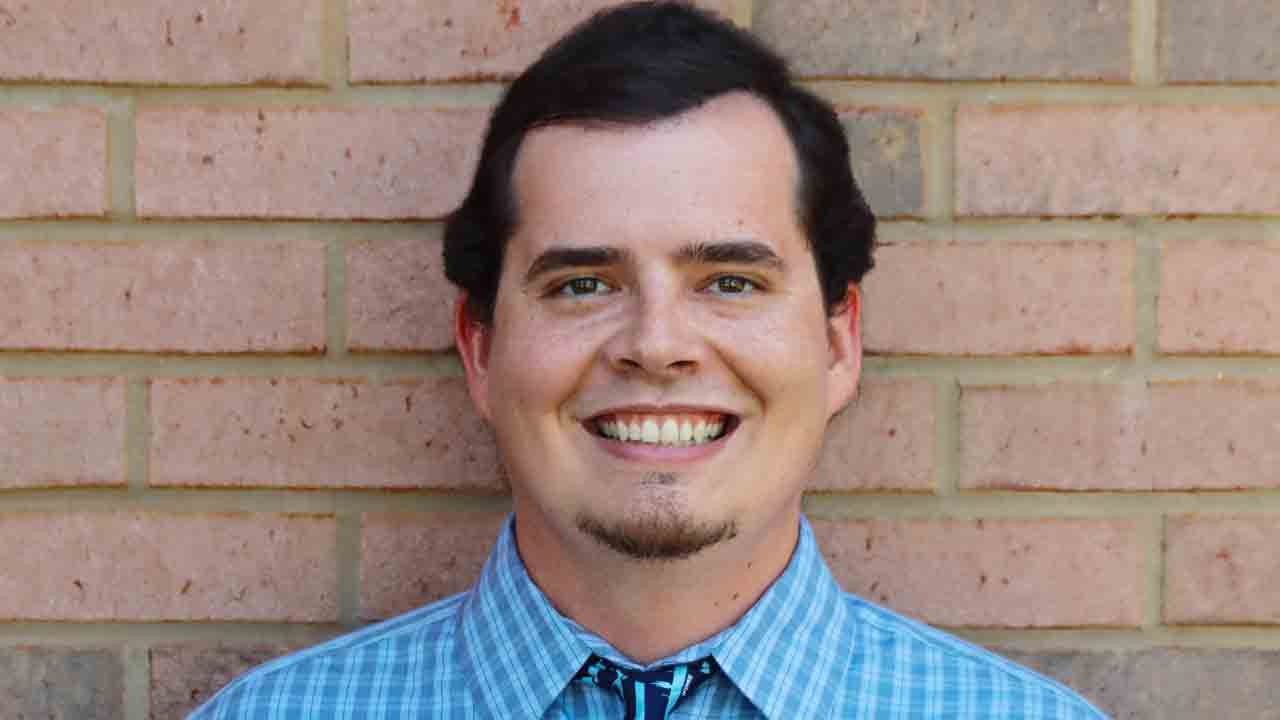
“Influence of freshwater influx on the diet and body condition of the common bottlenose dolphin, Tursiops truncatus, in Mobile Bay, Alabama”
Kayla DaCosta
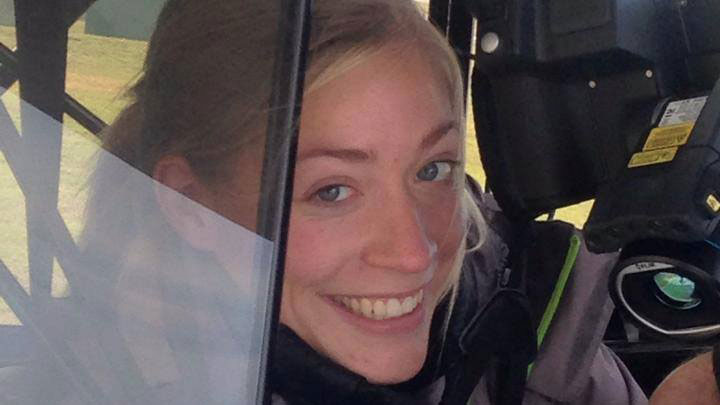
“Manatee population connectivity and habitat use in the northcentral Gulf of Mexico”
Ania Brown
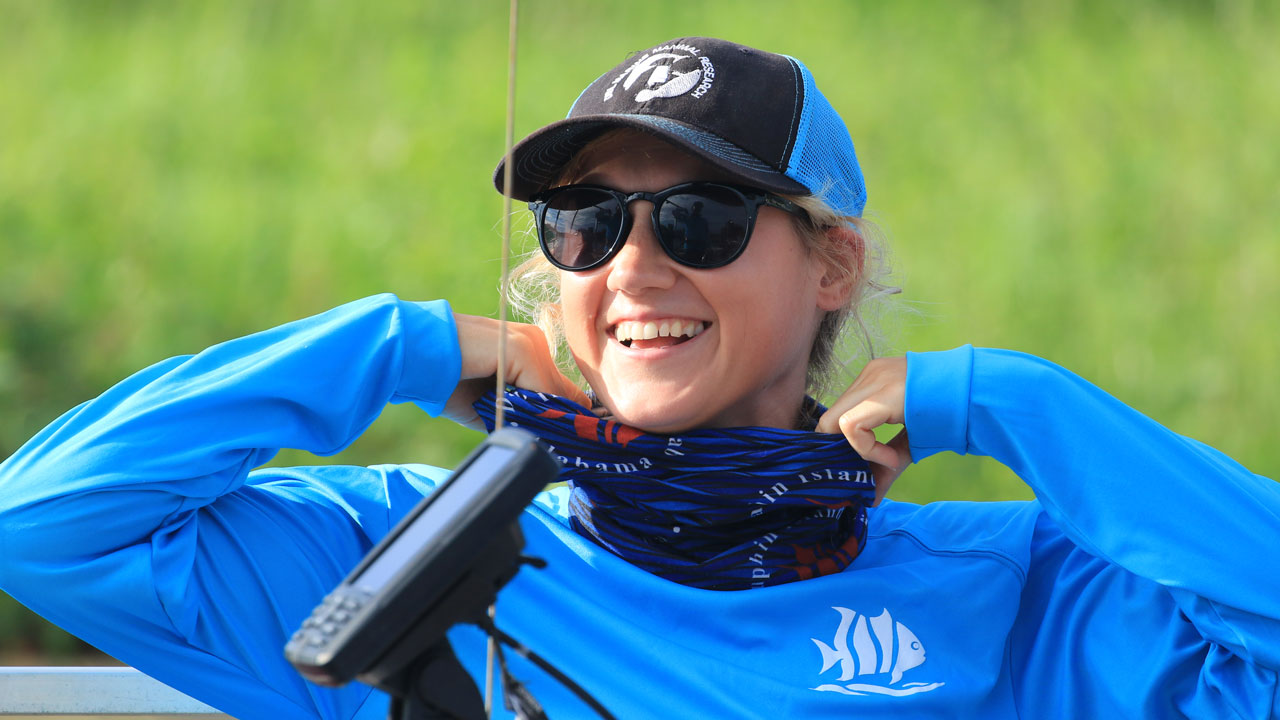
“Effects of water quality on dolphin health and the implications for human health in a changing climate”
Brianna Janssen
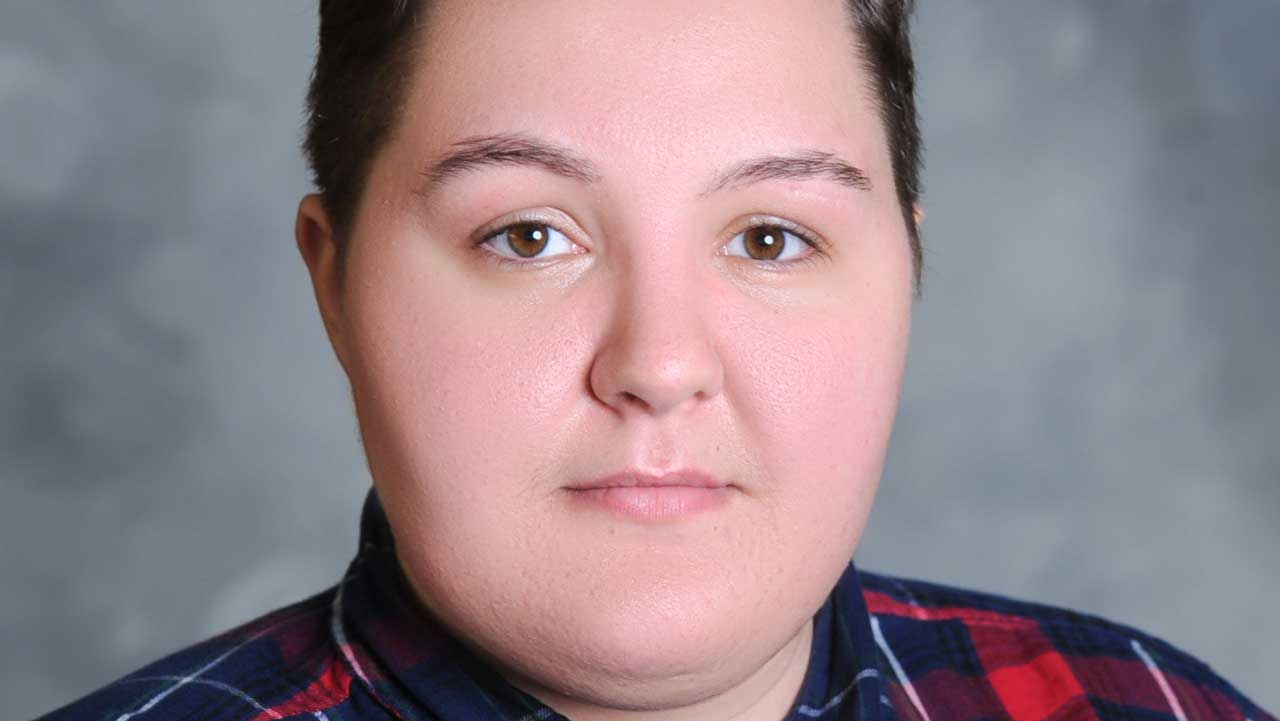
M.S. Student
Marine Conservation and Resource Management
Sophia Corde
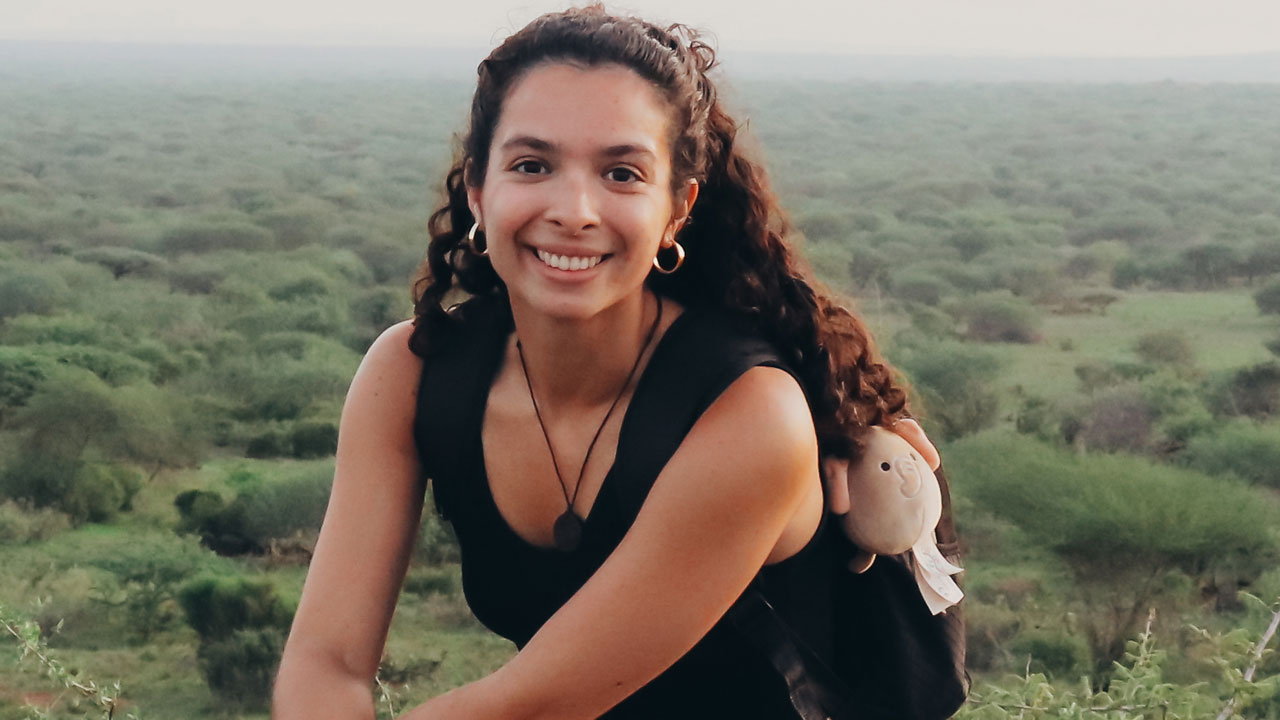
Ph.D. Student
“Assessing the ability of a citizen science network to quantify human-wildlife interaction potential using the DISL Manatee Sighting Network as a model”
Akela Yuhl
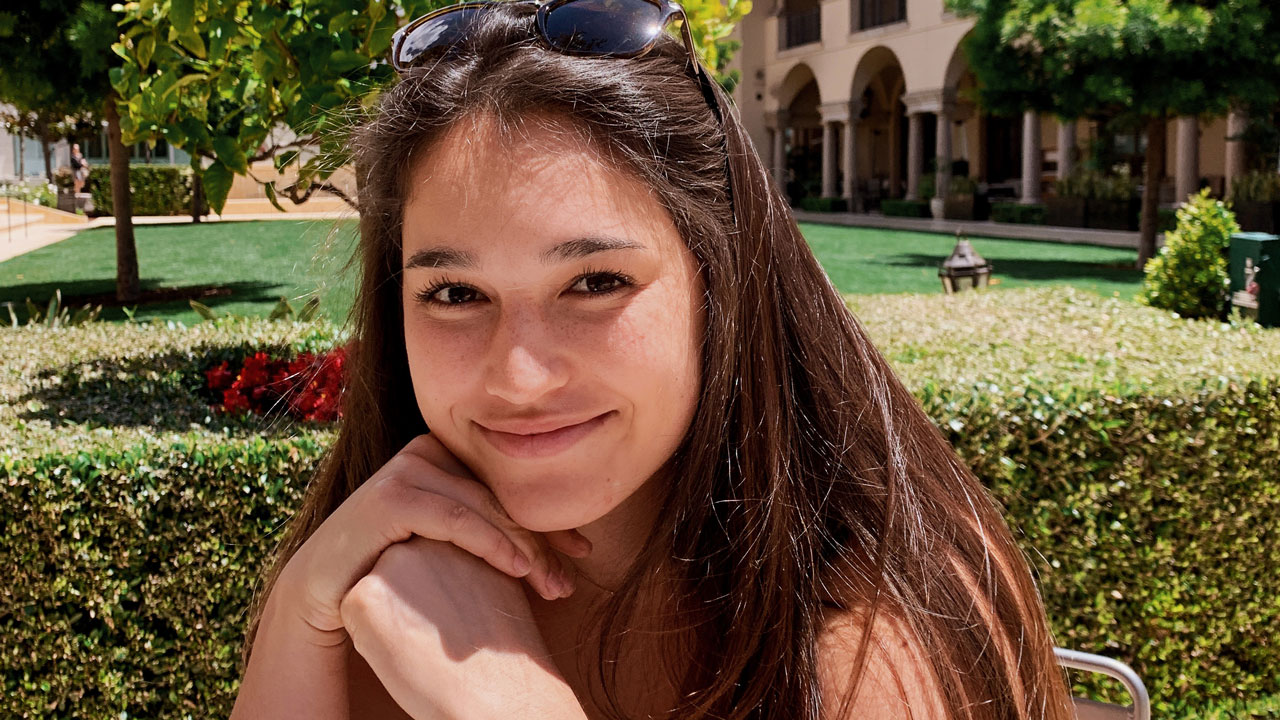
“Relating freshwater discharge to organic matter composition and movement through the Mobile Bay estuary”
Maggie McGuire
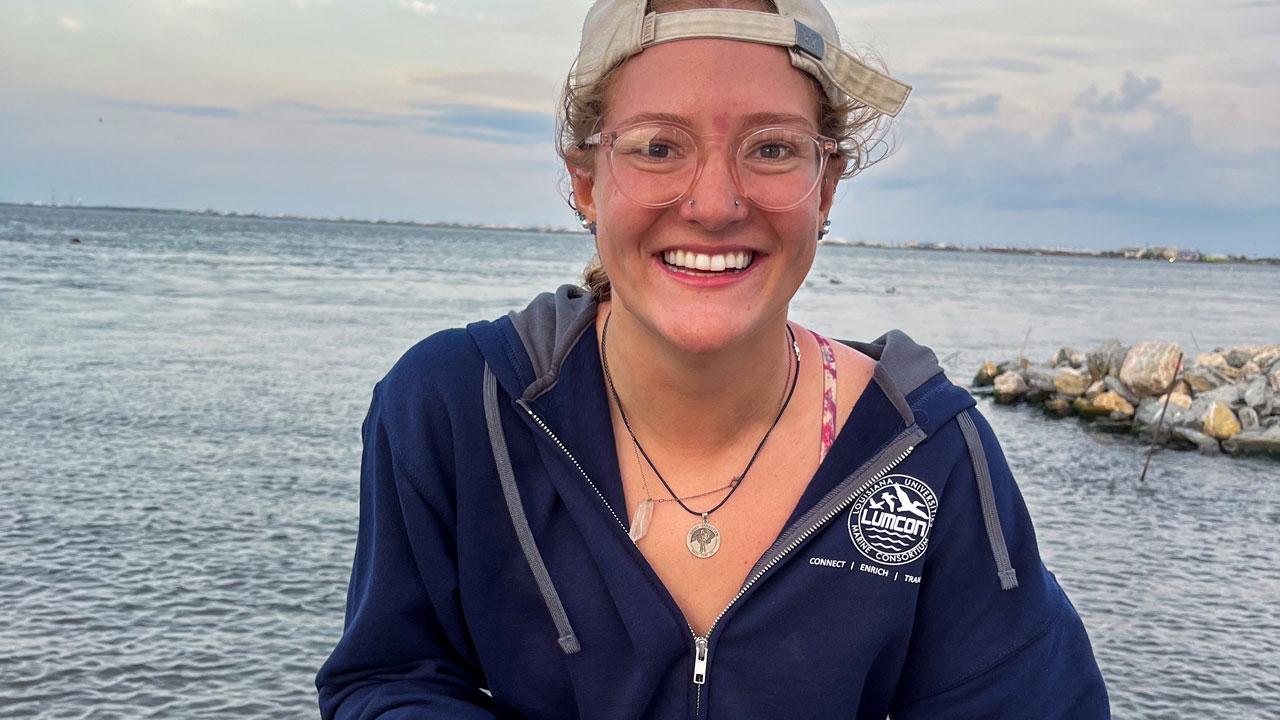
Sara Azadi
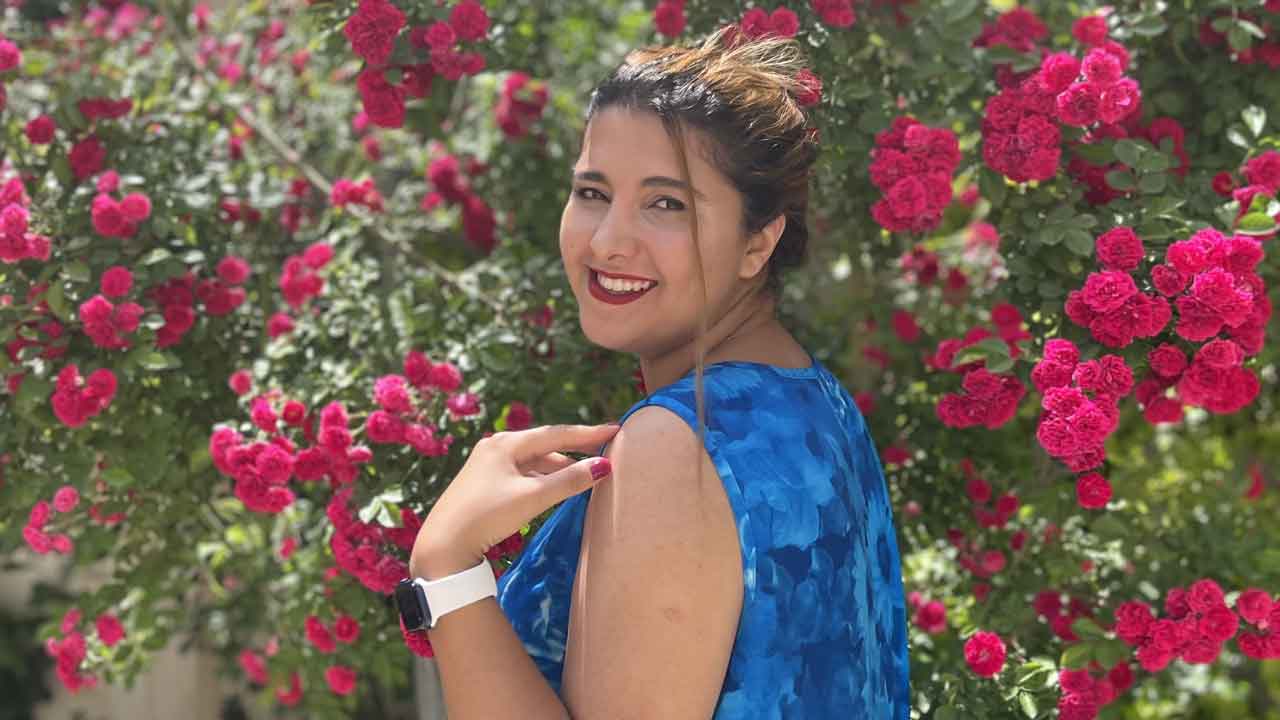
Marine Conservation and Resource Management
Maureen Goretti
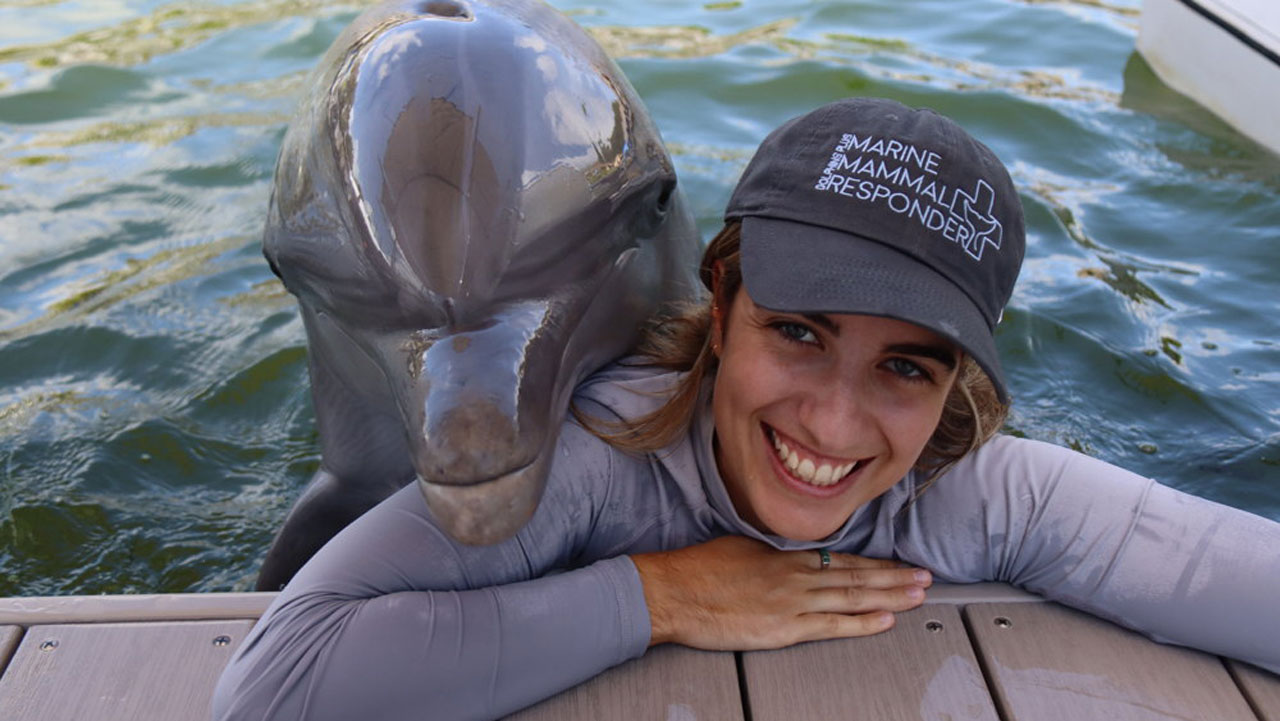
Research Technician
Assistant Marine Mammal Stranding Coordinator
B.S., North Carolina State University
Interns
2025
- Madison Thornhill (University of South Alabama)
- Cordelia Gillenwater (University of South Alabama)
- Hunter Morris (Jacksonville State University)
- Taniya Johnson (East Carolina University)
2024
- Eleanor Watts (Spring Hill College)
- Kaila Mackie (Auburn Vet School)
- Ashleigh Bock (University of South Alabama)
- Jennifer Latusek-Nabholz - Duke University
- Sebastian Penagos (Dalhousie University)
2023
- Vanessa Neve (University of South Alabama)
- Devin Lindsay (Auburn University)
- Briley Rigsby (University of South Alabama)
- Evelyn Brackebush (Gulf Scholar)
- Ethan Armour (Hendrix College)
- Claire Marchant (Troy University)
- Eleanor Watts (Spring Hill College)
- Madison Thornhill (University of South Alabama)
- Mary Ponti (Louisiana State University)
2022
- Caitlyn freeman (Spring Hill College)
- Leah Townsend (University of South Alabama)
- Laurel Siegrist (United States Coast Guard)
- Sarah Rice (University of Alabama)
- Phoebe Stewart (UAB)
- Bailey Walkinshaw (University of West Florida)
2021
- Taylor Strickland (University of South Alabama)
- Maria Tran (University of South Alabama)
- Rebecca Well (University of South Alabama)
- Asher Simmons (University of South Alabama)
- Erin Casellas (Florida Institute of Technology)
- Joe Hansen (University of North Carolina Wilmington)
- Lillie Black (University of Alabama)
- Kira Babiarz (Spring Hill College)
- Harrison Carrell (Auburn University)
- Sarah Thiesen (Wittenberg University)
- Chloe Ray (University of South Alabama)
2020
- Elizabeth “Biz” Nasharr (University of Alabama)
- Jessica Veo (University of Massachusetts Amherst)
- Maureen Goretti (North Carolina State University)
- Audrey McQuagge (University of Florida)
2019
- Tori McMahon (University of South Alabama)
- Kaiya McGhaw (Auburn University)
- Paige Gordy (University of South Alabama)
- Andrea Mason (University of Arizona)
- Cayman Travis Gardner (University of North Alabama)
- Abigail Thomas (Auburn University)
2018
- Heather Lane (Auburn University)
- Kassey Trahanas (Olivet Nazarene University)
- Deryn Hill (Southeastern Louisiana University)
- Matthew Harrison (Texas State University)
- Clara Zubrick (University of Mobile)
- Dakota Bilbrey (University of South Alabama)
- Jesse Harris (University of South Alabama)
- Jorgine Gentry
2017
- Grace Forster (University of South Alabama)
- Pray Stott (Spring Hill College)
- Stephanie Bulls (University of South Alabama)
- Chris Williams (University of South Alabama)
- Beatriz Tintore (University of Vic, Barcelona)
- Matt Hondabosi (M.S. Texas A&M University, Corpus Christi)
- Meagan Machholz (University of West Alabama)
- Mary-Sophia Golden (Auburn University)
- Amelia Grider (Auburn University)
- Carley Amox (Auburn University)
- Ruma Chatterji (M.S. Texas A&M University, Corpus Christi)
2016
- Angel Gray (University of North Alabama)
- Alex Patterson (University of Alabama at Birmingham)
- Beth Tuttle (University of Alabama at Birmingham)
- Dorothy Mitchell (Auburn University)
- Merrit McCall (Auburn University)
- Tano Buhring (Auburn University)
- Gen Kirstein (Troy University)
- Kindall Brown (University of Alabama)
- Kirsten Humphris (Jacksonville State University)
- Kim Killen (University of Mobile)
- Victoria Drumm (Brandeis University)
- Catherine Reynolds (University of South Alabama)
- Jamie Thompson (Abilene Christian University)
- Audrey Palombo (University of Florida)
- Kaitlyn Witlicki (University of Southern Mississippi)
- Tori Brackett (University of South Alabama)
- Rachel Chamberlain (University of South Alabama)
- Neil Berglund (Tulane University)
2015
- Anna Henrikson (University of South Alabama)
- Maren Stinson (Texas A&M University)
- Diego Calderon-Arrieta (Rhodes College)
- Deryn Hill (Southeastern Louisiana University)
- Lauren Willis (University of Alabama)
- Kristine Alford (University oif South Alabama)
- Ashley Frith (Brown University)
- Casey Fulford (Florida State University)
- Jessica Kinsella (University of North Carolina - Wilmington)
- Yishen Li (University of Miami)
- Autumn Nitz (University of South Alabama)
- Rebecca Dudley (University of Sheffield)
2014
- Ethan Cantin (University of South Alabama)
- Morgan Waites (University of South Alabama)
- Hailey Boeck (University of North Alabama)
- Josh Millwood (University of West Alabama)
- Hannah Shirley (University of West Alabama)
- Adam Forkner (University of Alabama)
- Emily Parker (University of Alabama)
- Rachel Valencia (University of Mobile)
- James Landry (University of Alabama)
- Alayna Lawson (Spring Hill College)
- Kristin Reints (University of South Alabama)
2013
- Renee Edwards (University of Illinois-Urbana Champagne)
- Jake Hall (University of North Alabama)
- Megann Santana (University of South Alabama)
- Amanda Ellenburg (University of South Alabama)
- Holly Bell (University of Mobile)
- Caitlin Collins (Troy University)
- Ariel Reed (University of North Alabama)
- Cara Whalen (University of South Alabama)
- Morgan Frank (University of South Alabama)
- Andrew Morin (Warren Wilson College, NC)
- Ben Nagel (Iowa State)
2008-2012
- Jessica Lajoie (University of Massachusetts-Amherst)
- Kristin Marino (University of Vermont)
- Pavel Dimens (SUNY, NY)
- Margaret Gilroy (MS, Duke University)
- Elizabeth Lauss (Florida Institute of Technology)
- Thomas Bilbo (Denison University)
- Emily Strauss (Spring Hill College)
- Carolyn Kovacs (College of William & Mary)
- Allen Aven (NGI Intern, University of Tennessee)
Directed Study Students
- Karlie Brodzinski (Jacksonville State University; summer 2024)
- Dakota Bilbrey (University of South Alabama; spring 2020)
- Chris Williams (University of South Alabama; summer 2017)
- Amber Simpson (University of South Alabama; summer 2016)
- Anna Henrikson (University of South Alabama; summer 2015)
- Emily Baker (Jacksonville State University; summer 2013)
- Marie Barton (University of Alabama; fall 2013)
- Tyler Mason (University of South Alabama; summer 2012)
- John McFadyen (University of Alabama; summer 2011)
- Erik Brush (Auburn University, AL; summer 2010)
- Maury Estes (Alabama A&M; summer 2009)
- Heather Juedes (University of Alabama; summer 2008)
- Lauren Waters (Auburn University, AL; summer 2007)
- Isabella D’Ambra (University of South Alabama; fall 2007)
REU Students
- KayLee Ridge (University of Evansville; summer 2024)
- Levette Tucker (University of South Alabama; summer 2023)
- Evan Marth (Athens State University; summer 2022)
- Yasmine Hall (Auburn University; summer 2022)
- Kahylin Nesbitt (Oakwood University, AL; summer 2021)
- Che’Isha Johnson (Talladega College, AL; summer 2021)
- Ti-Ara Turner (Judson College, AL; summer 2020)
- Ryanne Murray (Eckerd College, FL; summer 2019)
- Hanae Togami (Haverford College, PA; summer 2017)
- Elizabeth Thompson (Harding University, AR: summer 2016)
- Angie Garelick (CSU Channel Islands, CA; summer 2016)
- Sean Carter (Colorado College, CO; summer 2015)
- Amanda Jones (Rutgers University, NJ; summer 2011)
- Katie Interlichia (Vassar College, NY; summer 2010)
- Joshua Daskin (Brandeis University, MA; summer 2007)
Undergraduate/High School career shadowing
- Starla Clifton (Tuskegee University; spring 2025)
- Mia Ratliff (Louisiana State University; fall 2024)
- Maddie Partain (summer 2024)
- Cody J. Weinberger (University of Chicago, IL; spring 2013)
- Steven Vickery (University of Chicago, IL; spring 2011)
High School Interns
- Sophie Davis (Davidson High School; fall 2016-spring 2018)
- Nic Klinge (Daphne High School; summer 2013)
- Emil Johnson (W. P. Davidson High School, AL; spring 2010)
- Jacy Baggett (Murphy High School, AL; summer 2010)
- Cameron Welch (Benjamin Russell High School, AL; summer 2007)
Former Post-Docs
- Carl Cloyed (Ph.D. University of Louisville)
- Jennifer Boodgood (DVM, Ph.D. University of Georgia)
- Alissa Deming (DVM, Ph.D. University of Florida)
- LaTina Gambles (DVM, Tuskegee University, AL; Tufts University, MA; summer 2012)
- Pat Prado (Co-advisor under Dr. K. Heck)
Former Technicians
- Elizabeth Hieb (MS/University of South Alabama)
- Cristina Diaz Clark (BA/University of San Diego)
- Merri Collins (MS/Ohio University)
- Noel Wingers (BS/Florida Gulf Coast University)
- Jessica Delo (MS/Samford University)
- Ryan Crim (MS/Univ. of British Columbia, Vancouver)
- Courtney Miller (BS/University of South Alabama)
- Nicole Taylor (BS/Memphis State University)
- Claire Pabody (MA/University of Alabama)
Former Students
- Joe Hansen, M.S. Student - “Characterization of the skin microbiome of free ranging bottlenose dolphins (Tursiops truncatus) in a dynamic environment using a novel technique”
- Joseph Pavelites, M.S. Student - “Cadmium isotope fractionation in Eastern oyster shells”
- Emily Pepple, M.S. Student - Marine Conservation and Resource Management
- Lauren Clance, M.S. 2022 - “Evaluating stable isotopes and contaminants in bottlenose dolphins in Mobile Bay”
- Ashley Frith, M.S. 2020 - “Environmental effects on histamine production in decomposing fish”
- Toni Thomason M.S. 2020 - Marine Conservation and Resource Management
- Haley Gancel, Ph.D. 2020 - “Larval oyster (Crassostrea virginica) settlement, distribution, and growth in a freshwater dominated and human-influenced estuary”
- Kim Peter, M.S. 2020 - “Eastern oysters (Crassostrea virginica) as retrospective bioindicators to detect oil contamination in the marine environment”
- Allen Aven, Ph.D. candidate
- Natalie Santini, M.S. 2018 - Marine Conservation & Resource Management
- Elizabeth S. Darrow Condon, Ph.D. 2015 - “Evaluating historical and spatial anthropogenic impacts in a coastal estuary system using chemical and microbial indicators”
- Jessica Frank, M.S. 2015 (co-advised by Dr. A. Robertson) - “Investing potential domoic acid exposure in West Indian manatees stranded in coastal Alabama”
- Heather Patterson, Ph.D. 2014 - “Use of stable isotope ratios and protein regulation to detect dissolved oxygen stress in the eastern oyster, Crassostrea virginica”
- Joe Dalrymple, M.S. 2013 - “Effects of ontogeny on nitrogen sequestration and removal capacity of oysters”
- Isabella D’Ambra 2012 (co-advised with Dr. M. Graham) - “Application of stable isotopes in the analysis of trophic interactions between gelatinous Zooplankton and fish”
- Peter Biancani, M.S. 2010 - “Seasonal and spatial effects of wastewater effluent on oyster growth, survival, and accumulation of pathogens in Mobile Bay, AL"
Projects
- A pilot study of the extralimital West Indian Manatee population in Mobile Bay, AL
- Alabama Marine Mammal Stranding Network
- Bivalve enhanced N removal from coastal waters
- Development and integration of metadata and research data retention at DISL
- Effects of hypoxia on oyster growth and survival in Mobile Bay, AL
- Marine Mammal Research Program
- Population Ecology of West Indian manatees in Alabama waters
- The effects of nutrient enrichment on oyster ecology in Mobile Bay
- The trophic importance of land-derived organic matter
- Use of N stable isotope ratios in bivalve shell to trace anthropogenic N sources
- Use of telemetry and GPS to monitor West Indian manatee movements in Alabama waters
Publications
2025
- Ana M. M. Sequeira et al. Global tracking of marine megafauna space use reveals how to achieve conservation targets. Science388,1086-1097. Full Open-Access Paper. https://doi.org/10.1126/science.adl0239
- Cloyed, C.S., E.E. Hieb, H. Whitehead, R.H. Carmichael. Distributional analyses of American manatees in the continental United States under current and future conditions using multiple modeling approaches. MEPS 759:107-122. https://doi.org/10.3354/meps14836
- Bouveroux, T., C. Sinclair, K. Barry, L. Clance, J.J. Hansen, K.D. Mullin, P. Rosel, and R.H. Carmichael. Abundance and Residency Patterns of Common Bottlenose Dolphins (Tursiops truncatus) in Freshwater-Influenced Estuaries of the Northern Gulf of Mexico. Aquatic Conserv: Mar Freshw Ecosyst, 35: e70055. https://doi.org/10.1002/aqc.70055
2024
- Western, J.L., E.E. Hieb, M.L. Russell, C.D. Clark, D.S. Rotstein, S.M. Perry, A. Ingrisano, R.H. Carmichael, N.I. Stacy, and J.C.G. Bloodgood. Cold stress, heart failure, and esophageal occlusion cause the death of a West Indian manatee Trichechus manatus in Alabama, USA. Dis Aquat Org 160:57-63. https://doi.org/10.3354/dao03824
- Ponti, M.J., M.L. Russell, C.D. Clark, C.S. Cloyed, R.H. Carmichael, C.L. Johnson, J.C.G. Bloodgood. Stranded marine mammal detection by the public, trained responders, and drones using decoy carcasses. Marine Mammal Science e13169. https://doi.org/10.1111/mms.13169
- Munday, M.R., M.L. Russell, C.D. Clark, M.A. Delaney, M.J. Kinsel, et al. Four Cases of Severed Peduncles in Bottlenose Dolphins (Tursiops Trunctatus) Along the Alabama Coast. Journal of Zoo and Wildlife Medicine, 55(2):521-530. https://doi.org/10.1638/2023-0126
- Tucker, L., M.L. Russell, E.E. Hieb, R.H. Carmichael, and C.S. Cloyed. Stable Isotope Analysis of Manatee Vibrissae to Investigate Individual Patterns of Resource Use in the Northern Gulf of Mexico. Gulf and Caribbean Research 35 (1): SC12-SC19. https://doi.org/10.18785/gcr.3501.08
- Carmichael, T.O. and R.H. Carmichael. Braving the Elements- Loss of metals from Mardi Gras beads due to handling and weathering. Gulf and Caribbean Research. 35(1-7). https://doi.org/10.18785/gcr.3501.01
- Nolen, R.M., A. Prouse, M.L. Russell, J. Bloodgood, C.D. Clark, R.H. Carmichael, L.H. Petersen, K. Kaiser, D. Hala, and A. Quigg. Evaluation of fatty acids and carnitine as biomarkers of PFOS exposure in biota (fish and dolphin) from Galveston Bay and the northwestern Gulf of Mexico. Comparative Biochemistry and Physiology Part C: Toxicology & Pharmacology. Vol. 276. 109817. https://doi.org/10.1016/j.cbpc.2023.109817
2023
- Hieb, E., S. Snow, and R.H. Carmichael. Identifying Microdebris in Biodeposits of the Eastern Oyster, Crassostrea virginica. Gulf and Caribbean Research. 34(1). https://doi.org/10.18785/gcr.3401.22
- Bloodgood, J.C.G., A.C. Deming, K.M. Colegrove, M.L. Russell, C. Diaz Clark, and R.H. Carmichael. Causes of death and pathogen prevalence in bottlenose dolphins Tursiops truncatus stranded in Alabama, USA, between 2015 and 2020, following the Deepwater Horizon oil spill. Dis Aquat Org 155:87-102. https://doi.org/10.3354/dao03746
- Smith, D.R., H.J. Brockmann, R.H. Carmichael, E.M. Hallerman, W. Watson, and J. Zaldivar-Rae. Assessment of recovery potential for the American horseshoe crab (Limulus polyphemus): An application of the IUCN green status process. Aquatic Conserv: Mar Freshw Ecosyst. 2023;1–25. https://doi.org/10.1002/aqc.3990
- Hieb, E.E., C.S. Cloyed, K.P. DaCosta, A. Garelick, and R.H. Carmichael. Thermal microrefugia and changing climate affect migratory phenology of a thermally constrained marine mammal. Front. Ecol. Evol. 11:1211513. https://doi.org/10.3389/fevo.2023.1211513
- Frith, A., M.Hayes-Mims, R.Carmichael, and K.Bjornsdottir-Butter. Effects of Environmental Water Quality Variables on Histamine-Producing Bacteria Concentration and Species in the Northern Gulf of Mexico. Microbiology Spectrum. https://doi.org/10.1128/spectrum.04720-22
- Leard. E., R.H. Carmichael, A.C. Ortmann, and J. L. Jones. Environmental Drivers of Vibrio cholerae Abundances in Mobile Bay, Alabama. https://doi.org/10.1128/spectrum.01733-22
- Marth, E.C., C.S. Cloyed, and R.H. Carmichael. Identifying Stable Isotope Patterns among Taxa, Sites, and Environmental Variables in the Eastern Mississippi Sound. Gulf and Caribbean Research. Vol. 34(1). https://doi.org/10.18785/gcr.3401.02
- Cloyed, C.S., C. Johnson, K.P. DaCosta, L.R. Clance, M.L. Russell, C.D. Clark, E.E. Hieb, and R.H. Carmichael. Effects of tissue decomposition on stable isotope ratios and implications for use of stranded animals in research. Ecosphere. 14(2). https://doi.org/10.1002/ecs2.4385
2022
- Russell, M.L., J.C.G. Bloodgood, and R.H. Carmichael. Spatial, temporal, and demographic patterns of cetacean strandings in the northcentral Gulf of Mexico. Journal of Cetacean Research and Management. 23 (p. 171-182). https://doi.org/10.47536/jcrm.v23i1.356
- Carmichael, R.H., M.R. Hodanbosi, M. L. Russell, and N. L. Wingers. Human influence on bottlenose dolphin (Tursiops truncatus) strandings in the northern Gulf of Mexico. Front. Environ. Sci. 10:951329. https://doi.org/10.3389/fenvs.2022.951329
- Cloyed, C.S., E.E. Hieb, K.P. DaCosta, M. Ross, and R.H. Carmichael. Habitat selection and abundance of West Indian manatees Trichechus manatus at the margins of their expanding range. Mar Ecol Prog Ser. Vol. 696: 151–167. https://doi.org/10.3354/meps14116
- Bloodgood, J.C.G., M.L. Russell, C. D. Clark, E.E. Hieb, D. P. Mooe, T.R. Madgrigal, S. Carmichael, and R. H. Carmichael. From Monitoring to Final Disposition: Collaborative Response to the First Live Sperm Whale (Physeter macrocephalus) Stranding in Alabama, USA. Aquatic Mammals, 48(6), 485-494, https://doi.org/10.1578/AM.48.6.2022.485
2021
- Botton, M. L., B. A. John, R. H. Carmichael, F. Mohamad, P. Bhadury, J. Zaldivar-Rae, P. K. S. Shin, J. T. Tanacredi, and S. G. Cheung. Horseshoe crabs: ‘Living fossils’ imperiled in the Anthropocene. In: D. A. DellaSala and M. I. Goldstein (eds.), Imperiled: The Encyclopedia of Conservation. Reference Module in Earth Systems and Environmental Sciences, Elsevier. https://doi.org/10.1016/B978-0-12-821139-7.00103-3
- Cloyed, Carl S., B.C. Balmer, L.H. Schwacke, R.S. Wells, E.J. Berens McCabe, A.A. Barleycorn, J.B. Allen, T.K. Rowles, C.R. Smith, R. Takeshita, F.I. Townsend, M.C. Tumlin, E.S. Zolman, and R.H. Carmichael. Interaction between dietary and habitat niche breadth influences cetacean vulnerability to environmental disturbance. Ecosphere. 12 (9):e03759. https://doi.org/10.1002/ecs2.3759
- Cloyed, C.S., E. E. Hieb, K. DaCosta, M.Ross, and R. H. Carmichael. West Indian Manatees Use Partial Migration to Expand Their Geographic Range Into the Northern Gulf of Mexico. Front. Mar. Sci. https://doi.org/10.3389/fmars.2021.725837
- Estes, Jr, M.G., R.H. Carmichael, X. Chen, and S.C. Carter. Environmental factors and occurrence of horseshoe crabs in the northcentral Gulf of Mexico PLoS ONE 16(1): e0243478. https://doi.org/10.1371/journal.pone.0243478
- Gancel, H. N., R. H. Carmichael, J. Du, and K. Park. Use of settlement patterns and geochemical tagging to test population connectivity of eastern oysters Crassostrea virginica. Mar Ecol Prog. Ser 673:85-105. https://doi.org/10.3354/meps13796
- Hieb, E.E., E.A. Eniang, L.W. Keith-Diagne, and R.H. Carmichael. In‐Water Bridge Construction Effects on Manatees with Implications for Marine Megafauna Species. The Journal of Wildlife Management 1–12; 2021; https://doi.org/10.1002/jwmg.22030
- Cloyed, C.S., R.M. Wilson, B.C. Balmer, A.A. Hohn, L.H. Schwacke, E.S. Zolman, M.C. Tumlin, R.S. Wells, A.A. Barleycorn, J.B. Allen, and R.H. Carmichael. Specialization of a mobile, apex predator affects trophic coupling among adjacent habitats. Sci Rep 11, 19611. https://doi.org/10.1038/s41598-021-99017-1
- Cloyed, C.S., B.C. Balmer, L.H. Schwacke, R. Takeshita, A. Hohn, R.S. Wells, T.K. Rowles, J.T. Saliki, C.R. Smith, M.C. Tumlin, E.S. Zolman, D.A. Fauquier, and R.H. Carmichael. Linking morbillivirus exposure to individual habitat use of common bottlenose dolphins (Tursiops truncatus) between geographically different sites. J Anim Ecol. 2021;00:1–14. https://doi.org/10.1111/1365-2656.13446
- Frith, A., J. Henseler, S. Badri, K.R. Calci, A. Stenson, and R.H. Carmichael. Multiple Indicators of Wastewater Contamination to Shellfish Farms Near a Tidal River. Estuaries and Coasts. https://doi.org/10.1007/s12237-021-01033-x
- Groet, T.M., E. E. Hieb, E. S. Darrow, and R. H. Carmichael. Our Wastewater Footprint: Protecting Water Quality Through Comprehensive Coproduction of Knowledge. Case Studies in the Environment (2021) 5 (1): 1425563. https://doi.org/10.1525/cse.2021.1425563
- Grace, M.K., H.R. Akcakaya, E.L. Bennett, T.M. Brooks, A. Heath, et al. Testing a global standard for quantifying species recovery and assessing conservation impact. Conservation Biology. 2021;1–17. https://doi.org/10.1111/cobi.13756
2020
- Cloyed, C.S., K.P. DaCosta, M.R. Hodanbosi, and R.H. Carmichael. The effects of lipid extraction on δ13C and δ15N values and use of lipid-correction models across tissues, taxa and trophic groups. Methods Ecol Evol. 00:1-12. https://doi.org/10.1111/2041-210X.13386
- Deming, A.C., N.L. Wingers, D. P. Moore, D. Rotstein, R. S. Wells, R. Ewing, M. R. Hodanbosi, and R. H. Carmichael. Health Impacts and Recovery From Prolonged Freshwater Exposure in a Common Bottlenose Dolphin (Tursiops truncatus) Front. Vet. Sci.. Vol. 7(235). https://doi.org/10.3389/fvets.2020.00235
2019
- Hays, G.C., H. Bailey, S.J. Bograd, W.D. Bowen, C. Campagna, R.H. Carmichael, and et. al.. Translating Marine Animal Tracking Data into Conservation Policy and Management Trends in Ecology & Evolution. 2491. https://doi.org/10.1016/j.tree.2019.01.009
- Gancel, H.N., R.H. Carmichael, K. Park, J.W. Krause, and S. Rikard. Field Mark-Recapture of Calcein-Stained Larval Oysters (Crassostrea virginica) in a Freshwater-Dominated Estuary. Estuaries and Coasts. https://doi.org/10.1007/s12237-019-00582-6
- Sequeira, A.M.M., M.R. Heupel, M.-A. Lea, V.M. Eguiluz, C.M. Duarte, M.G. Meekan, M. Thums, H.J. Calich, R.H. Carmichael, D.P. Costa, L.C. Ferreira, J. Fernandez-Garcia, R. Harcourt, A.L. Harrison, I. Jonsen, C.R. McMahon, D.W. Sims, R.P. Wilson, and G.C. Hays. The importance of sample size in marine megafauna tagging studies. Ecological Applications. 0(0). e01947. https://doi.org/10.1002/eap.1947
- Cloyed, C.S., E.E. Hieb, M.K. Collins, K.P. DaCosta, and R.H. Carmichael. Linking use of ship channels by West Indian Manatees (Trichechus manatus) to seasonal migration and habitat use. frontiers in Marine Science. 6:318. https://doi.org/10.3389/fmars.2019.00318
- Murray, R., R.H. Carmichael, M.K. Collins, M.L. Russell, and A.C. Deming. Dead or Alive: Use of Elemental Analysis to Determine Status of Stranded Perinate Bottlenose Dolphins (Tursiops truncatus). Gulf and Caribbean Research. Vol. 30 (1). https://doi.org/10.18785/gcr.3001.12
- Collins, M.K., R.H. Carmichael, D.S. Rotstein, J.H. Byrd, and A.C. Deming. Suspected broadhead arrow injuries in two common bottlenose dolphins (Tursiops truncatus) along the Alabama Coast. Marine Mammal Science. https://doi.org/10.1111/mms.12667
2018
- Patterson, H.K. and R.H. Carmichael. Dissolved oxygen concentration affects δ15n values in oyster tissues: implications for stable isotope ecology. Ecosphere. Volume9(3). Article e02154. https://doi.org/10.1002/ecs2.2154
- Grüss, A., M.D. Drexler, C.H. Ainsworth, J.J. Roberts, R.H. Carmichael, N.F. Putman, P.M. Richards, E. Chancellor, E.A. Babcock, and M.S. Love. Improving the spatial allocation of marine mammal and sea turtle biomasses in spatially explicit ecosystem models. Marine Ecology Progress Series. Vol. 602: 255–274. https://doi.org/10.3354/meps12640
- D'Ambra, I., W.M. Graham, R.H. Carmichael, F.J. Hernandez, Jr. Dietary overlap between jellyfish and forage fish in the northern Gulf of Mexico. Marine Ecology Progress Series. Vol. 587; 31-40. https://doi.org/10.3354/meps12419
- Sequeira, A. M. M., J. Rodríguez, V. Eguíluz, R. Harcourt, M. Hinde, D. Sims, C. Duarte, D. Costa, Fernández-Gracia, L. Ferreira, G. Hays, M. Heupe, M. Meekan, A. Aven, F. Bailleul, A. Baylis, M. Berumen, C. Braun, J. Burns, J. Caley, R. Campbell, R. H. Carmichael, et al. Convergence of marine megafauna movement patterns in coastal and open oceans. PNAS. p.201716173. https://doi.org/10.1073/pnas.1716137115
2017
- Hohn, A., L. Thomas, C. Booth, R. H. Carmichael, J. Litz, D. Shannon, S. Shippee, C. Sinclair, S. Smith, T. R. Speakman, M. Tumlin, E. Zolman. Assigning Stranded Dolphins to Stock using Stable Isotope Ratios following the Deepwater Horizon Oil Spill. Endanger. Species Res. 33:235-252. https://doi.org/10.3354/esr00783
- Hieb, E.E., R.H. Carmichael, A. Aven, C. Nelson-Seely, N. Taylor. Sighting demographics of the West Indian manatee (Trichechus manatus) in the north central Gulf of Mexico. Endangered Species Research 32:321-332. https://doi.org/10.3354/esr00817
- Fauquier, D. A., J. Litz, S. Sanchez, K. Colegrove, L. Schwacke, L. Hart, J. Saliki, C. Smith, T. Goldstein, S. Bowen-Stevens, W. McFee, E. Fougeres, B. Mase-Guthrie, E. Stratton, R. Ewing, S. Venn-Watson, R. H. Carmichael, C. Clemons-Chevis, D. Shannon, S. Shippee, S. Smith, L. Staggs, M. Tumlin, N. Wingers, T. Rowles. Evaluation of Morbillivirus Exposure in Cetaceans from the Northern Gulf of Mexico 2010-2014. Endangered Species Research, 33:211-220. https://doi.org/10.3354/esr00772
- Darrow, E. S., R. H. Carmichael, C. F. T. Andrus, H. E. Jackson. From middens to modern estuaries, oyster shells sequester source-specific nitrogen. Geochimica et Cosmochimica Acta 202:39-56. https://doi.org/10.1016/j.gca.2016.12.023
- Krause, J., E. Darrow, R. Pickering, R. H. Carmichael, A. Larson, J. Basaldua. Reactive Silica Fractions in Coastal Lagoon Sediments from the Northern Gulf of Mexico. Cont. Shelf Res. 151(2017):8-14. https://doi.org/10.1016/j.csr.2017.09.014
2016
- Colegrove, K., S. Venn-Watson, J. Litz, M. J. Kinsel, K. A.Terio, E. Fougeres, Ruth Ewing, D. A. Pabst, W. A. McLellan, S. Raverty, J. Saliki, S. Fire, G. Rappucci, S. Bowen-Stevens, L. Noble, A. Costidis, M. Barbieri, C. Field, S. Smith, R. H. Carmichael, C. Chevis, W. Hatchett, D. Shannon, M. Tumlin, G. Lovewell, W. McFee, T. Rowles. Fetal distress and in utero Brucella pneumonia in perinatal bottlenose dolphins (Tursiops truncatus) during the Northern Gulf of Mexico unusual mortality event: 2010 through 2013. Dis. Aquat. Org. 119:1-16. https://doi.org/10.3354/dao02969
- Darrow, E. S., R. H. Carmichael, K. R. Calci, W. Burkhardt III. Land-use related changes to sedimentary organic matter in tidal creeks of the northern Gulf of Mexico Limnol. Oceanogr. https://doi.org/10.1002/lno.10453
- Patterson H. K., R. H. Carmichael. The effect of lipid extraction on carbon and nitrogen stable isotope ratios in oyster tissues: Implications for glycogen-rich species. Rapid Commun. Mass Sp. 30(24):2594-600. https://doi.org/10.1002/rcm.7759
- Oczkowski, A., T. Gumbley, B. Carter, R. Carmichael, A. Humphries. Establishing an Anthropogenic Nitrogen Baseline Using Native American Shell Middens. Frontiers Mar Sci. Vol 3. https://doi.org/10.3389/fmars.2016.00079.
2015
- Venn-Watson, S., L. Garrison, J. Litz, E. Fougeres, B. Mase, G. Rappucci, E. Stratton, R. H. Carmichael, D. Odell, D. Shannon, S. Shippee, S. Smith L. Staggs, M. Tumlin, H. Whitehead, T. Rowles. Demographic clusters identified within the northern Gulf of Mexico common bottlenose dolphin (Tursiops truncates) unusual mortality event: January 2010-June 2013. PLoS ONE 10(2): e0117248. https://doi.org/10.1371/journal.pone.0117248
- Estes, M. G., Jr., R. H. Carmichael, P. D. M. Macdonald, A. Brady, J. McFadyen. Molts reveal life-history patterns for juvenile American horseshoe crabs in fringe habitats. Changing Global Perspectives on Biology, Conservation, and Management of Horseshoe Crabs, Springer, New York.
- D'Ambra, I., W. M. Graham, R. H. Carmichael, F. J. Hernandez, Jr. Fish rely on scyphozoan hosts as a primary food source- evidence from stable isotope analysis. Mar. Biol. 162:247-252. https://doi.org/10.1007/s00227-014-2569-5
- Botton, M., R. H. Carmichael, P. Shin, S. Cheung. Emerging Issues in Horseshoe Crab Conservation: A Perspective from the IUCN Species Specialist Group. In- Carmichael, R., Botton, M., Shin, P., Cheung, S. (eds) Changing Global Perspectives on Horseshoe Crab Biology, Conservation and Management. Springer, Cham. https://doi.org/10.1007/978-3-319-19542-1_21
- Aven, A.M., R. H. Carmichael, M. J. Ajemian, S. P. Powers. Addition of passive acoustic telemetry mitigates lost data from satellite-tracked manatees. Marine and Freshwater Research. 66:371-374. https://doi.org/10.1071/MF14178
- Carmichael, R. H., E. Hieb, G. Gauvry, C.N. Shuster, Jr.Examination of Large Exuviae with Mating Scars: Do Female American Horseshoe Crabs, Limulus polyphemus, Molt After Sexual Maturity?. In- Carmichael, R., Botton, M., Shin, P., Cheung, S. (eds) Changing Global Perspectives on Horseshoe Crab Biology, Conservation and Management. Springer, Cham. https://doi.org/10.1007/978-3-319-19542-1_20
- Hieb, E. E., J. Baggett, A. Aven, R. H. Carmichael. Effects of sediment type and tank shape on horseshoe crab (Limulus polyphemus) growth and survival in culture Changing Global Perspectives on Biology, Conservation, and Management of Horseshoe Crabs, Springer, New York. https://doi.org/10.1007/978-3-319-19542-1
- Gauvry, G., R. H. Carmichael. Young Voices: Through the Arts, Future Environmental Stewards Have a Global Voice. In: Carmichael, R., Botton, M., Shin, P., Cheung, S. (eds) Changing Global Perspectives on Horseshoe Crab Biology, Conservation and Management. Springer, Cham. https://doi.org/10.1007/978-3-319-19542-1_34
- Dalrymple, J. D., R. H. Carmichael. Effects of age class on N removal capacity of oysters and implications for bioremediation. Marine Ecology Progress Series. 528:205-220. https://doi.org/10.3354/meps11252
- Venn-Watson, S., K. Colegrove, J. Litz, M. Kinsel, K. Terio, J. Saliki, S. Fire, R. H. Carmichael, C. Chevis, W. Hatchett, J. Pitchford, M. Tumlin, C. Field, S. Smith, R. Ewing, D. Fauquier, G. Lovewell, H. Whitehead, D. Rotstein, W. McFee, E. Fougeres, T. Rowles. Adrenal gland and lung lesions in Gulf of Mexico common bottlenose dolphins (Tursiops truncates) found dead following Deepwater Horizon oil spill. PLoS ONE 10(5): e0126538. https://doi.org/10.1371/journal.pone.0126538
- Mortazavi, B., A. Ortmann, L. Wang, R. Bernard, C. Staudhammer, D. J. Dalrymple, R. H. Carmichael, A. Kleinhuizen. Evaluating the impact of oyster (Crassostrea virginica) gardening on sediment nitrogen cycling in a subtropical estuary. Bull. Mar. Sci. 91:323-341(19). https://doi.org/10.5343/bms.2014.1060
2014
- Kellogg,L., A. Smyth, M. W. Luckenbach, R.H. Carmichael, B. L. Brown, J.C. Cornwell, Michael F. Piehler, M. S. Owens, D. J. Dalrymole, C. Higgins. Use of oysters to mitigate eutrophication in coastal waters. Est Coast Shelf Sci. 151:156-168. https://doi.org/10.1016/j.ecss.2014.09.025
- Litz, J., M. Baran, R. H. Carmichael, K. Colegrove, S. Fire, E. Fougeres, R. Hardy, S. Holmes, W. Jones, B. Mase‐Guthrie, D. Odell, P. Rosel, D. Shannon, J. Saliki, S. Shippee, S. Smith, E. Stratton, S. Bowen‐Stevens, M. Tumlin, H. Whitehead, G. Worthy, T. Rowles. A review of historical unusual mortality events in the Gulf of Mexico (1990-2009): providing context for the complex and long-lasting Northern Gulf of Mexico Cetacean UME. Dis. Aquat. Org. 112:161-175. https://doi.org/10.3354/dao02807
- Patterson H. K., A. Boettcher, R.H. Carmichael. Biomarkers of dissolved oxygen stress in oysters: A tool for restoration and management efforts. PLos ONE 9(8): e104440. https://doi.org/10.1371/journal.pone.0104440
- Martin, J., H. Edwards, F. Bled, C. Fonnesbeck, J. Dupuis, B. Gardner, S. Koslovsky, A. Aven, L. Ward-Geiger, R.H. Carmichael, D. Faga, M. Ross, and J. Royle. Estimating upper bounds for occupancy and maximum number of manatees in areas potentially affected by the Gulf oil spill. PLos ONE 9(3): e91683. https://doi.org/10.1371/journal.pone.0091683
- D’Ambra, I., R. H. Carmichael, W. M. Graham. Determination of δ13C and δ15N and trophic fractionation in jellyfish: implications for food web ecology. Mar. Biol. 161: 473-480. https://doi.org/10.1007/s00227-013-2345-y
2013
- D'Ambra, I., W. M. Graham, R. H. Carmichael, A. Malej, V. Onofri. Predation patterns and prey quality of medusae in a semi-enclosed marine lake-implications for food web energy transfer in coastal marine ecosystems. J. Plankton Res. 35(6):1305-1312. https://doi.org/10.1093/plankt/fbt065
2012
- Carmichael, R. H., A. C. Shriver, I. Valiela. Bivalve Response to Estuarine Eutrophication: The Balance Between Enhanced Food Supply and Habitat Alterations. Journal of Shellfish Research. 31(1):1 -11. https://doi.org/10.2983/035.031.0101
- Carmichael, R. H., E. Brush. Three Decades of Horseshoe Crab Rearing: A Review of Condition for Captive Growth and Survival. Reviews in Aquaculture 4:32–43. https://doi.org/10.1111/j.1753-5131.2012.01059.x
- Drymon, J.M., Powers, S.P., Carmichael, R.H. Trophic plasticity in the Atlantic sharpnose shark (Rhizoprionodon terraenovae) in the northern Gulf of Mexico. Environmental Biology of Fishes. 95:21-35. https://doi.org/10.1007/s10641-011-9922-z
- Carmichael, R. H. A. Jones, H. Patterson, W. Walton, A. Pérez-Huerta, E. Overton, M. Dailey, K. Willett. Assimilation of oil -derived elements by oysters due to the Deepwater Horizon oil spill. Environ. Sci. Technol. 46: 12787 -12795.
- Carmichael, R. H., W. Graham, A. Aven, G. Worthy, S. Howden.. Unusual cold and Deepwater Horizon: Were multiple stressors a 'perfect storm' for bottlenose dolphins in 2011? PloS ONE 7(7): e41155. https://doi.org/10.1371/journal.pone.0041155
- Carmichael, R. H., W. Walton, and H. Clark. Bivalve enhanced N removal from coastal estuaries. Can. J. Fish. Aquat. Sci. 69: 1131 -1149. https://doi.org/10.1139/f2012-057
- Prado, P., R.H. Carmichael, S. Watts, J. Cebrian, K. Heck. Diet -dependent δ13C and δ15N fractionation among sea urchin (Lytechinus variegatus) tissues: Implications for food web models. Mar. Ecol. Prog. Ser. 462: 175-190. https://doi.org/10.3354/meps09786
2011
- Biancani, J., R. H. Carmichael, J. Daskin, W. Burkhardt, K. Calci. Seasonal and Spatial Effects of Wastewater Effluent on Growth, Survival, and Accumulation of Microbial Contaminants by Oysters in Mobile Bay, Alabama. Estuaries and Coasts 35:121 -131. https://doi.org/10.1007/s12237-011-9421-7
2010
- Graham, W., E. D. Condon, R. H. Carmichael, I. D’Ambra, H. K. Patterson, F. J. Hernandez, Jr. Oil Carbon Entered the Coastal Planktonic Food Web During the Deepwater Horizon Oil Spill. Environ. Res. Lett. 5(045301):1-6. https://doi.org/10.1088/1748-9326/5/4/045301
- Kovacs, C., J. Daskin, H. Patterson, R. H. Carmichael. Crassostrea virginica shells record local variation in wastewater inputs to a coastal estuary. Aquat. Biol. 9: 77 -84. https://doi.org/10.3354/ab00228
- Carmichael, R. H. and C. Kovacs. Comment on Watanabe et al. (2009). Mar. Pollut. Bull. 60:314-315. https://doi.org/10.1016/j.marpolbul.2009.11.001
2009
- Pabody, C., R. H. Carmichael, L. Rice, M. Ross. West Indian manatees in Mobile Bay, Alabama: A new sighting network adds to twenty years of historical data on extralimital populations. Gulf of Mexico Science. 1:52 -61. https://doi.org/10.18785/GOMS.2701.06
- Carmichael, R. H., E. Gaines, Z. Sheller, A. Tong, A. Clapp, I. Valiela. Diet composition of juvenile horseshoe crabs: Implications for growth and survival of natural and cultured stocks. p.521-534. In J.T. Tanacredi et al. (eds.), Biology and Conservation of Horseshoe Crabs. Springer. https://doi.org/10.1007/978-0-387-89959-6_33
- Smith, D., M. Millard, R. H. Carmichael. Comparative status and assessment of Limulus polyphemus with emphasis on the New England and Delaware Bay populations. p.361 -386. In J.T. Tanacredi et al. (eds.), Biology and Conservation of Horseshoe Crabs. Springer
2008
- Daskin, J. H., K. Calci, W. Burkhardt, III, R. H. Carmichael. Use of N stable isotope and microbial analyses to define wastewater influence in Mobile Bay, AL. Mar. Pollut. Bull. 56: 860-868. https://doi.org/10.1016/j.marpolbul.2008.02.002
- Carmichael, R. H., T. Hattenrath, I. Valiela, R. H. Michener. Nitrogen stable isotopes in the shell of Mercenaria trace wastewater inputs from watersheds to estuarine ecosystems. Aquat. Biol. 4:99 -111. Feature Article. https://doi.org/10.3354/ab00106
2007
- Bowen, J., K. Kroeger, G. Tomasky, W. J. Pabich, M. L. Cole, R. H. Carmichael, and I. Valiela. A review of land -sea coupling by groundwater discharge pf nitrogen to New England estuaries: Mechanisms and effects. Applied Geochemistry. 22: 175 -191. https://doi.org/10.1016/j.apgeochem.2006.09.002
2005
- Carmichael, R. H., I. Valiela. Coupling of near -bottom seston and surface sediment composition: Changes with nutrient enrichment and implications for estuarine food supply and biogeochemical processing. Limnol. Oceanogr. 50: 97 -105. https://doi.org/10.4319/lo.2005.50.1.0097
2004
- Carmichael, R. H. Effects of eutrophication on Mya arenaria and Mercenaria mercenaria: Growth, survival, and physiological responses to changes in food supply and habitat in estuaries receiving different N loads. Boston University ProQuest Dissertations Publishing
- Rutecki, D., R. H. Carmichael, I. Valiela. Magnitude of harvest of Atlantic horseshoe crabs, Limulus polyphemus, in Pleasant Bay, MA. Estuaries 27: 179 -187. https://doi.org/10.1007/BF02803374
- Carmichael, R. H., A. Shriver, I. Valiela. Changes in shell and soft tissue growth, tissue composition, and survival of quahogs, Mercenaria mercenaria, and softshell clams, Mya arenaria, in response to eutrophic -driven changes in food supply and habitat. J. Exp. Mar. Biol. Ecol. 313: 75-104. https://doi.org/10.1016/J.JEMBE.2004.08.006
- Carmichael, R. H., B. Annette, I. Valiela. N loading to Pleasant Bay, Cape Cod: Application of models and stable isotopes to detect incipient nutrient enrichment of estuaries. Mar. Pollut. Bull. 48: 137 -143. https://doi.org/10.1016/s0025-326x(03)00372-2
- Carmichael, R. H., D. Rutecki, B. Annett, E. Gaines, I. Valiela. Position of horseshoe crabs in estuarine food webs: N and C stable isotopic study of foraging ranges and diet composition. J. Exp. Mar. Biol. Ecol. 299: 231-253. https://doi.org/10.1016/j.jembe.2003.09.006
2003
- Carmichael, R. H., D. Rutecki, I. Valiela. Abundance and population structure of the Atlantic horseshoe crab, Limulus polyphemus, in Pleasant Bay, Cape Cod. Mar. Ecol. Prog. Ser. 246: 225 -239. https://doi.org/10.3354/meps246225
- O'Connell, C. W., S. P. Grady, A. S. Leschen, R. H. Carmichael, I. Valiela. Stable isotopic assessment of site loyalty and relationships between size and trophic position of the Atlantic horseshoe crab, Limulus polyphemus, in Cape Cod estuaries. Biol. Bull. 205 pp 254-255. https://doi.org/10.2307/1543281
2002
- Shriver, A. C., R. H. Carmichael, I. Valiela. Growth, condition, reproductive potential, and mortality of bay scallops, Argopecten irradians, in response to eutrophic-driven changes in food resources. J. Exp. Mar. Biol. Ecol. 279: 21-40. https://doi.org/10.1016/S0022-0981(02)00340-4
- Gaines, E., R. H. Carmichael, S. P. Grady, I. Valiela. Stable isotopic evidence for changing nutritional sources of juvenile horseshoe crabs. Biol. Bull. 203: 228-230.
- Suggs, D., R. H. Carmichael, S. P. Grady, I. Valiela. Effects of individual size on pairing in horseshoe crabs. Biol. Bull. 203: 225 -227. https://doi.org/10.2307/1543410
- Weiss, E., R. H. Carmichael, I. Valiela. The effect of nitrogen loading on the growth rates of quahogs (Mercenaria mercenaria) and soft-shell clams (Mya arenaria) through changes in food supply Aquaculture 211:275-289.
2001
- Grady, S., D. Rutecki, R. H. Carmichael, I. Valiela. Age structure of the Pleasant Bay population of Crepidula fornicata: A possible tool for estimating horseshoe crab age. Biol. Bull. 201: 296-297.
- Fila, L., R. H. Carmichael, A. Shriver, I. Valiela. Stable N isotopic signatures in Bay scallop tissue, feces, and pseudofeces in Cape Cod estuaries subject to different N loads. Biol. Bull. 201: 294-296. https://doi.org/10.2307/1543374
